Some of the links in this post may be affiliate links.
If you are looking for a unique and unusual houseplant, Dischidia nummularia, or String of Nickels, is it! Is it becoming more and more popular but is still hard to find. If you can get your hands on it, it makes for a fabulous houseplant! Let me show you how I can for my Dischidia nummularia.
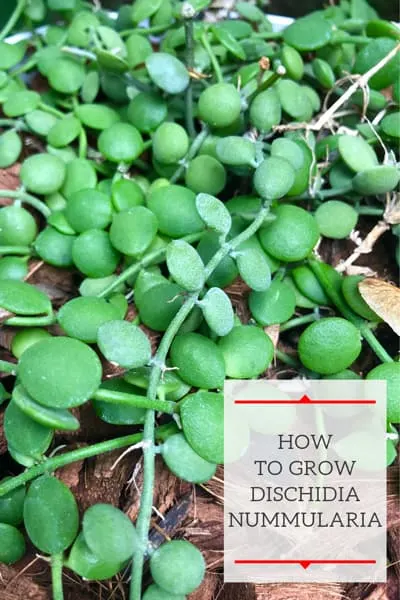
Dischidia nummularia gets its common name, String of Nickels, because it looks like long strings of coins.
Table of Contents
Dischidia Nummularia Care
These plants are a little different than many of your houseplants so it is critical that you know a few very important things about how to grow Dischidia nummularia.
Keep reading and I will describe some very important care tips so you can ensure success!
Potting Mix
For one, these plants are epiphytes, which means that they grow on trees in nature. Because of this, you should never plant Dischidia nummularia in normal potting soil!
They are normally found growing in masses on branches in trees and are native to areas including India, China, Indonesia, Thailand, and other surrounding areas. As houseplants, they are normally grown in hanging baskets.
Similar to most orchids, like any epiphyte, you should grow your Dischidia nummularia in a chunky and extremely well drained potting mix. You can use a variety of potting mixes, such as a good orchid mix.
I grow my own Dischidia nummularia in coco husk chips. Coco husk chips are made from coconut shells.
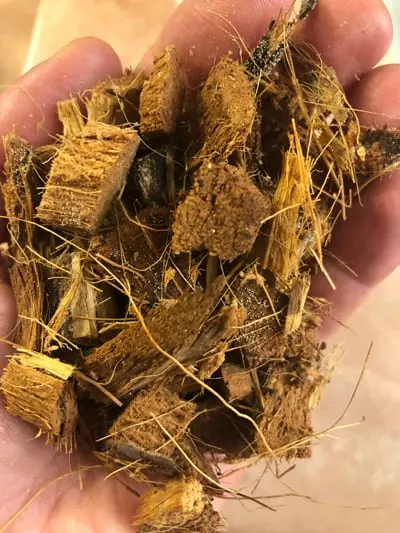
If you use a standard potting soil, it will hold too much water and compact too much. This will spell death for any epiphyte.
I chose to use coco husk chips for my own plant since this is what is traditionally used by growers. And it is thriving!
One tip from a grower in Singapore is the following. He advises to mix some sphagnum moss into the coco husk chunks. This will help retain moisture. If Dischidia dries out too much, it may stunt the growth.
Of course this all depends on your watering habits and environmental conditions, but it is something to consider! Eventually the potting mix will break down, so keep an eye on this and change it out when that happens.
If the potting mix breaks down, whether you are using coco husk chips or an orchid potting mix, the roots will not receive the oxygen that they need (being epiphytes) and your plant will die.
Watering
Dischidia nummularia likes to dry out a bit in between watering, but try and avoid letting it completely dry out. If you let it dry out too much, the leaves and stems will shrivel.
Since this plant is grown in very chunky potting mixes, like coco husk chips, the drainage will be very sharp. As a result, you should take special care when you water this plant.
Water will go straight through very quickly when you use chunky mixes for epiphytes, so be sure to thoroughly moisten the potting mix. Circle your watering can over the entire surface of the pot.
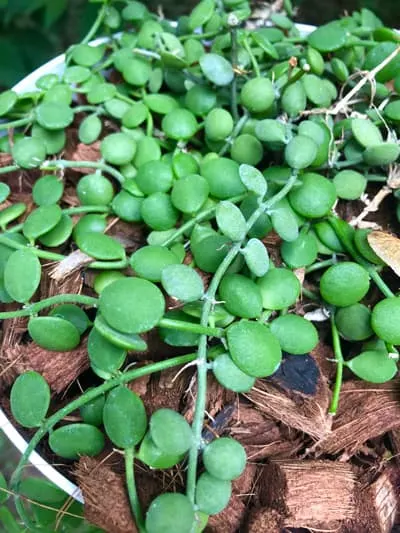
And under no circumstances should you be growing this plant in a pot without a drainage hole. This will spell death for any epiphyte!
Light
Dischidia prefers filtered sunlight, or at the bare minimum, bright indirect light. Some direct sun is perfectly fine. But take care not to place this plant in a location that has too many hours of direct sun.
My own plant is growing near an east window so it will get some morning sun.
In the summer, I like to place my plant outdoors where I hang it from my pergola. It is mostly shaded, but also received filtered sun.
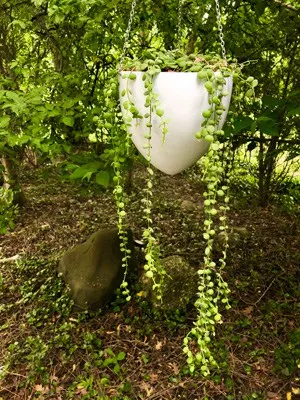
It absolutely thrives outdoors from the rain, increased air circulation, and humidity that all epiphytes love.
Misting Dischidia
I like to frequently mist my Dischidia nummularia. Not for the humidity (if you follow my blog, you know how I feel about humidity!)
I mist my plant indoors mainly because it is an epiphyte and it helps provide some moisture. When my plant is outdoors, I don’t bother because of the higher humidity in the air and rain.
Fertilizing
I follow my standard fertilizing approach and will fertilize very dilutely with every watering. These plants are not heavy feeders, but some feeding will benefit them.
I only fertilize during the growing season and withhold fertilizer during our dark and cold winters. If you live in a warmer climate, you may be able to fertilize year round.
My fertilizer of choice is Dyna-Gro Grow. It is an amazing, urea-free, complete fertilizer that contains all of the macro and micronutrients that your plants need.
Propagating Dischidia Nummularia
The best way to propagate this plant is by taking short stem cuttings. Allow the cuts to heal for a couple days.
Then place the stem segments on top of moist sphagnum moss. The segments will grow roots, and at this time, transfer the plants to a pot where you will be growing your Dischidia.
You can see that there are roots already along the stem. Look for those as you’re propagating and you would be ensured success.
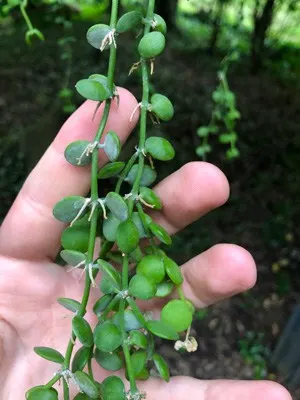
Just be careful though because when you take cuttings, it will excrete a milky sap which can irritate your skin. Be sure to handle carefully and wash your hands with soap and water afterwards.
There are many other Dischidias too and I grow two others.
Check out my blog posts on the prolific Dischidia ruscifolia as well as the beautiful “watermelon” Dischidia or Dischidia ovata.
Dischidia Nummularia Shriveling?
Lastly, I wanted to talk a bit about if you see your Dischidia leaves shriveling. This is normally due to either your plant going too dry or being kept wet for too long.
Great right? So how do you know the difference? You would think that the result would be different, but in many cases it is not. Let me explain why, and this will also apply to many other plants as well.
If your plant has gone bone dry for a while, the leaves will shrivel from dehydration.
On the other end, if you keep your plant too wet, the roots will eventually rot. If your roots have rotted, your plant can not take up moisture through the roots and thus your plant will actually dehydrate! Make sense now?
So if you see your leaves are starting to shrivel on your Dischidia, stick your finger in the potting mix. Is it bone dry? Or is it wet? This will give you an indication of what happened.
And if you placed your plant in a standard potting soil, well, we already talked about that…
I hope this post helps you grow this still uncommon, yet delightful plant!

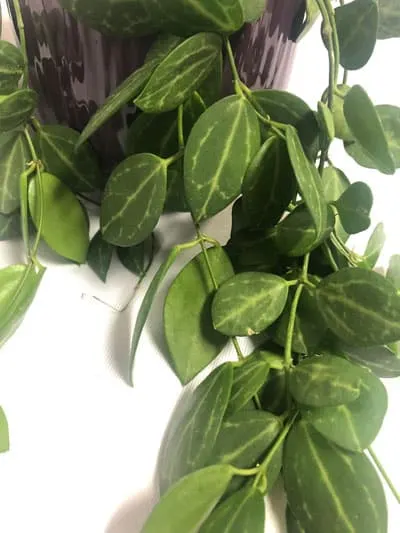
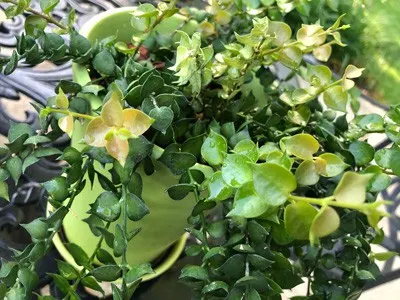
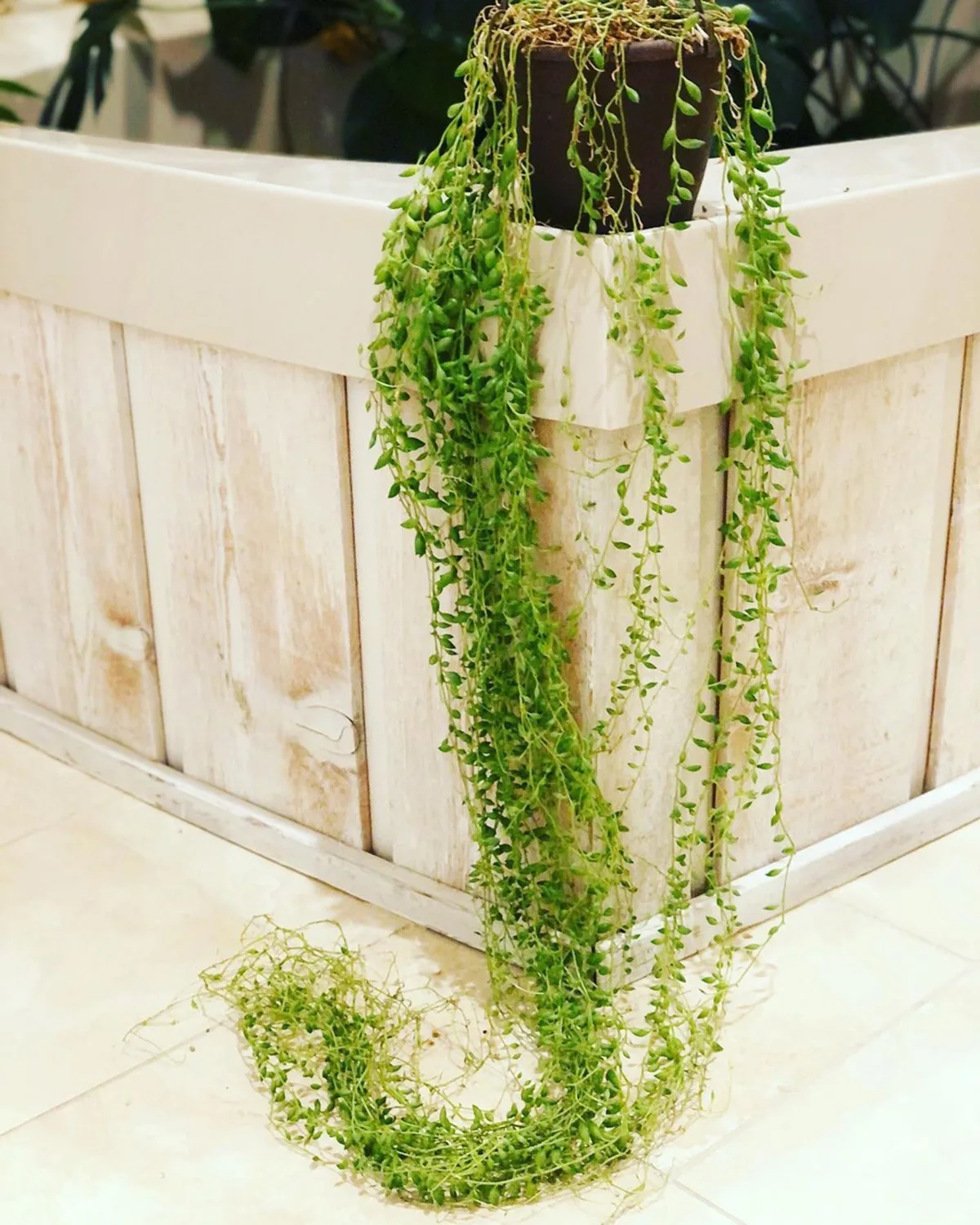
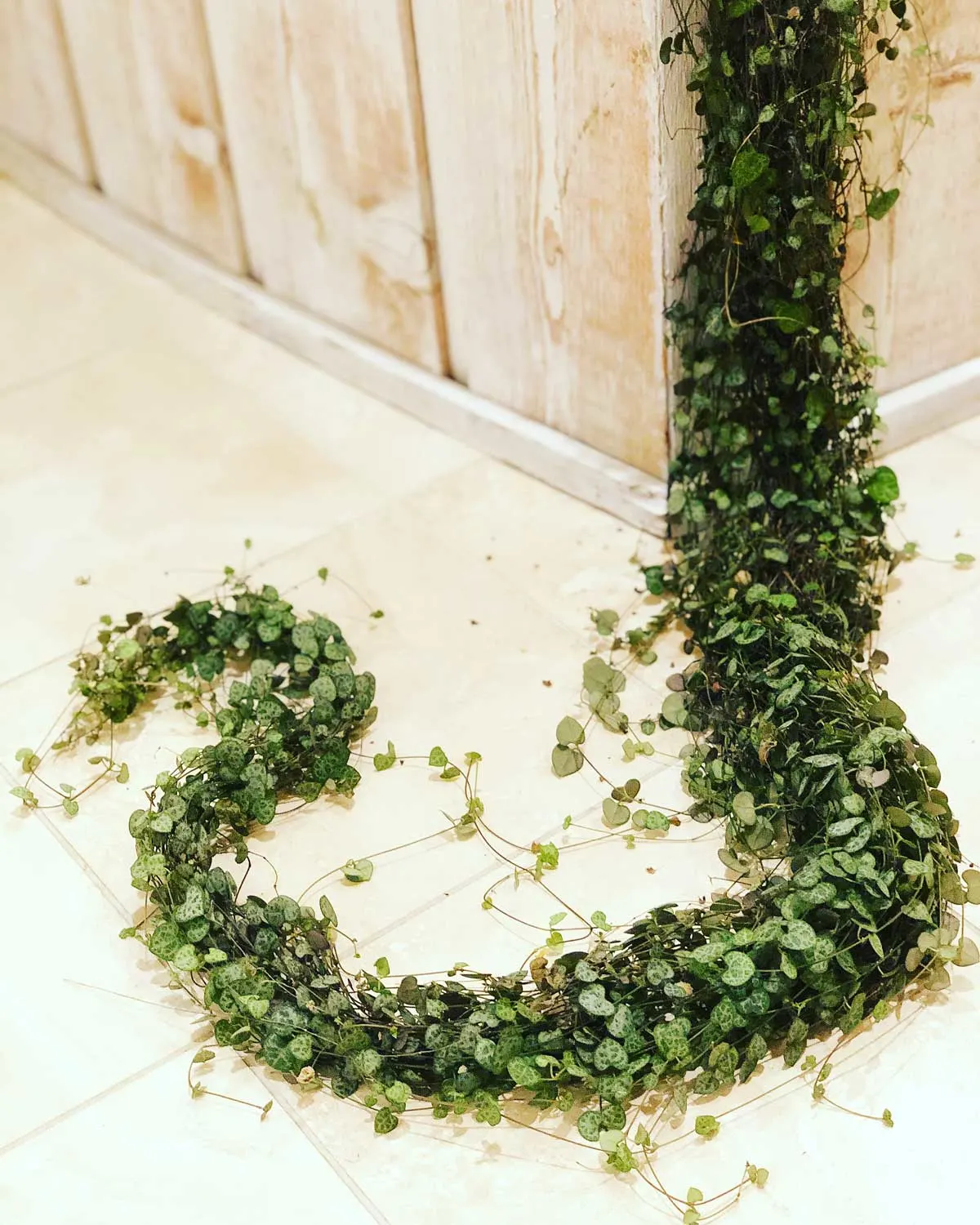
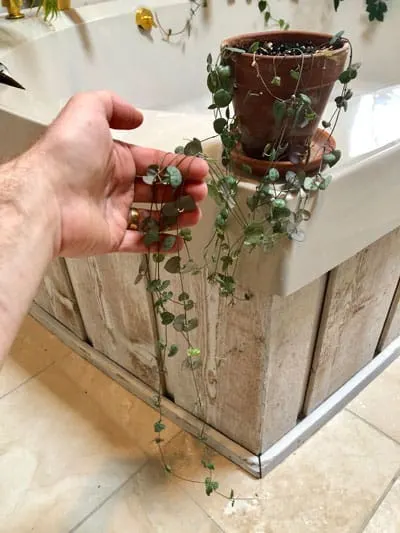
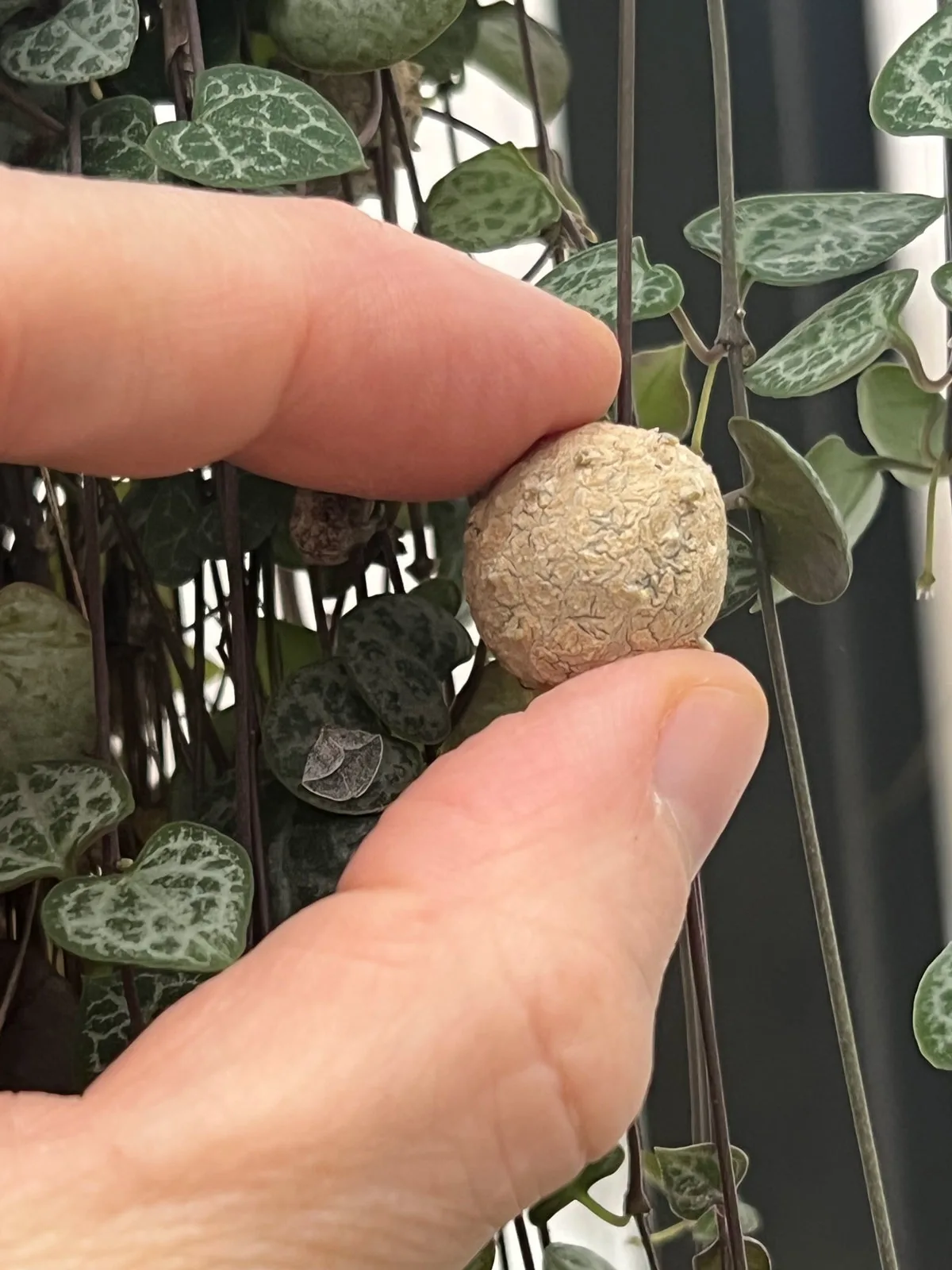
Izzy
Thursday 17th of August 2023
Hi Raffaelle,
Me again! This time I have a problem with my Dischidia Nummularia. I bought it online and it arrived about a week ago in the post. It's a big (seemingly healthy!) plant with 2 ft stems, but it had some yellow leaves when it arrived which subsequently fell off. Now more leaves on the same stem are turning yellow, and I've noticed that the base of the stem has gone black and I just removed some black and mushy leaves at the base. This suggests root rot to me, but the other stems in the pot all seem fine so I'm not sure whether to "operate". I watered a few days ago because the soil felt dry. It's moist at the moment but not wet. I think it's come in a free-draining substrate from the online shop but not as free-draining as coco husks.
Any help really appreciated. I previously lost a String of Nickels to root rot so I'll be so sad if it happens again :(
Lorna
Friday 13th of January 2023
Hi! I have had my string of nickels for years! I think I bought it at Home Depot, I can’t remember it’s been so long, anyways I have it in regular potting soil and it grows like a weed! It even flowers! It grows and wraps itself on whatever it wants to! I water it when it looks like it needs it. But I mostly keep it on the dry side. I have propagated it many times and have given many away. Some have survived some not. I enjoy it very much!
Raffaele
Sunday 22nd of January 2023
It's a wonderful plant for sure! Very unusual! Glad you're having success with growing it Lorna!
Sharon Bevins
Sunday 13th of December 2020
Thanks for your info, I’m looking at buying one on Esty, had no idea it was in orchid family.I have a few succulents but mostly cactus.Last but not least, I have 1 Lowe’s orchid that bloomed for me. I felt like a new mother, I was so proud. ??
Raffaele
Monday 14th of December 2020
Hi Sharon! Just to be clear, they are not in the orchid family. I was just stating that they are epiphytes, just like many orchids, where they grow on trees.
Jaynie Cunningham
Wednesday 7th of October 2020
I have a small string of nickles. It has been growing rapidly. It has started to have brown spots on the leave. I did not know if it was getting too much sun or maybe had a disease? I would appreciate your opinion. Thank you.
Raffaele
Thursday 8th of October 2020
Hi Jaynie, I would need to see a photo in order to try and help. You can use the contact form on my website. When I reply, you can attach a photo, and also more details on your care so I can try and help.
Esther
Friday 28th of August 2020
Will you be getting more. IVE been searching for months for one and cant find them anywhere?
Judy
Thursday 25th of November 2021
@Raffaele, oh. Darn auto correct elf! Hoyas are much like dischidia. Many hoya growers grow dischidia also. Some sell pieces or plants.
Judy
Thursday 25th of November 2021
@Raffaele, l found them very hard to buy. If you still do not have one, try joining a hoya group. Lots of hoya growers are diagnosis growers too.
Raffaele
Saturday 29th of August 2020
I'm not a shop unfortunately :-). They are not commonly found. Try ebay or etsy or even a Facebook group.